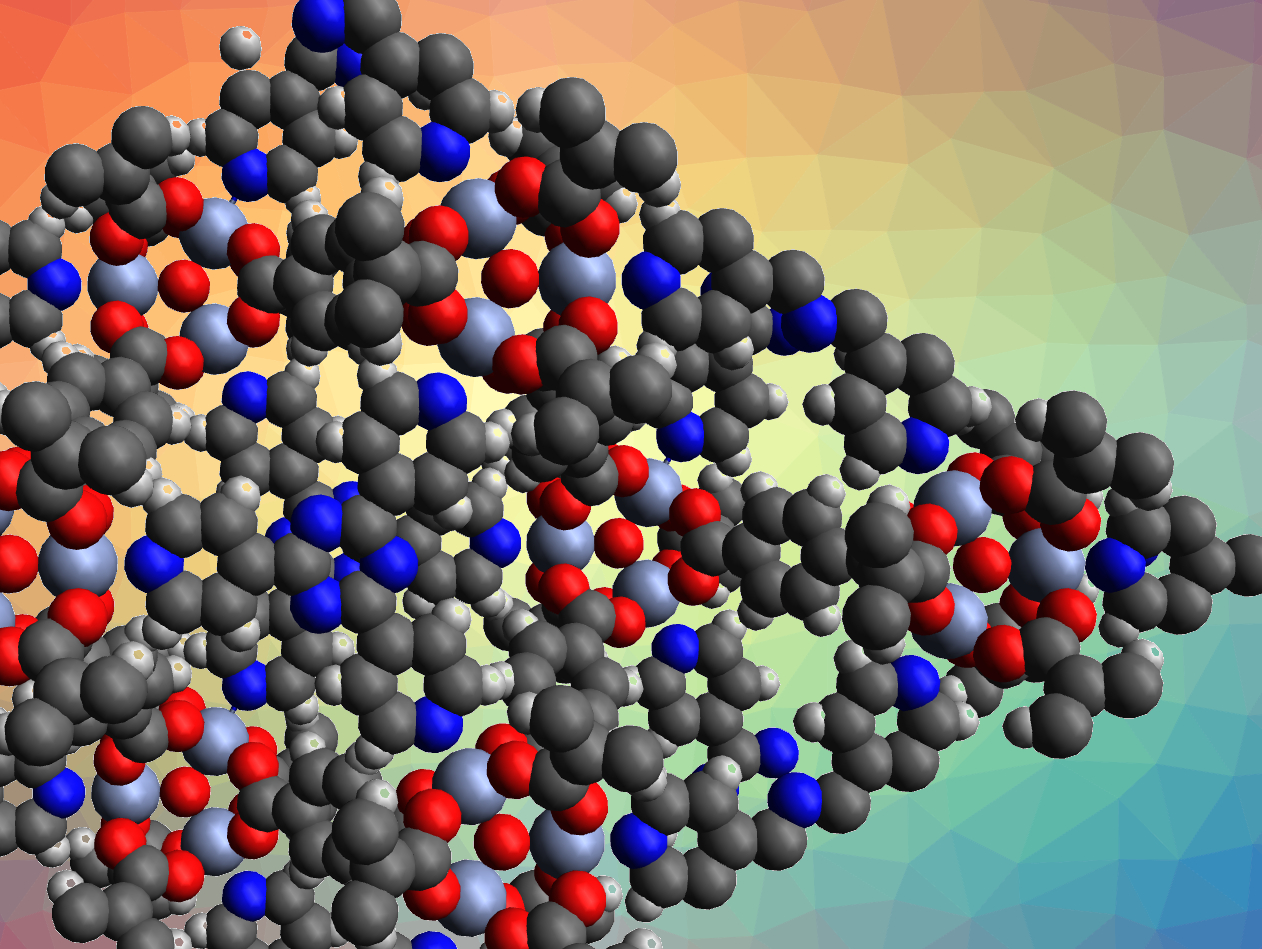Metal–organic frameworks (MOFs) are crystalline, porous materials composed of metal centers and organic linkers. MOFs can be useful, e.g., in catalysis or gas separation. However, they are not usually stable over very wide pH ranges. Cr(III) can be used to form stable MOFs, but chrome-based metal–organic frameworks can be challenging to crystallize and there few examples of Cr-MOFs.
Xianhui Bu, California State University, Long Beach, USA, Pingyun Feng, University of California, Riverside, USA, and colleagues have prepared new Cr-based MOFs that are both acid- and base-resistant and can withstand pH values across approximately 16 pH units, from pH < 0 to pH > 14 (example pictured). The team used chromium nitrate (Cr(NO3)3·9 H2O) as the Cr precursor and combined it with different ditopic ligands, such as 1,4-benzenedicarboxylic acid (H2bdc), 2-aminoterephthalic acid (H2N–H2bdc), and biphenyl-4,4-dicarboxylic acid (H2bpdc), and tritopic linkers, e.g., 2,4,6-tri(4-pyridyl)-1,3,5-triazine (tpt), 2,4,6-tri(4-pyridyl)pyridine (tppy), or 2,4,6-tri(4-pyridyl)benzene (tpbz).
Of the resulting MOFs, CPM-243(F) was stable across the widest pH range (pH ≈ −1 to 15). It was synthesized by a hydrothermal reaction of Cr(NO3)3·9 H2O, H2bdc, and tpt with hydrofluoric acid as an acid modulator at 220 °C. The prepared MOFs feature highly connected Cr3O trimers and a mix of Cr–N and Cr–O crosslinks, which improves their stability. According to the researchers, the frameworks have the potential for further development to give new series of Cr-MOFs.
- Ultrastable High-Connected Chromium Metal–Organic Frameworks,
Huajun Yang, Fang Peng, Anh N. Hong, Yanxiang Wang, Xianhui Bu, Pingyun Feng,
J. Am. Chem. Soc. 2021.
https://doi.org/10.1021/jacs.1c07277



